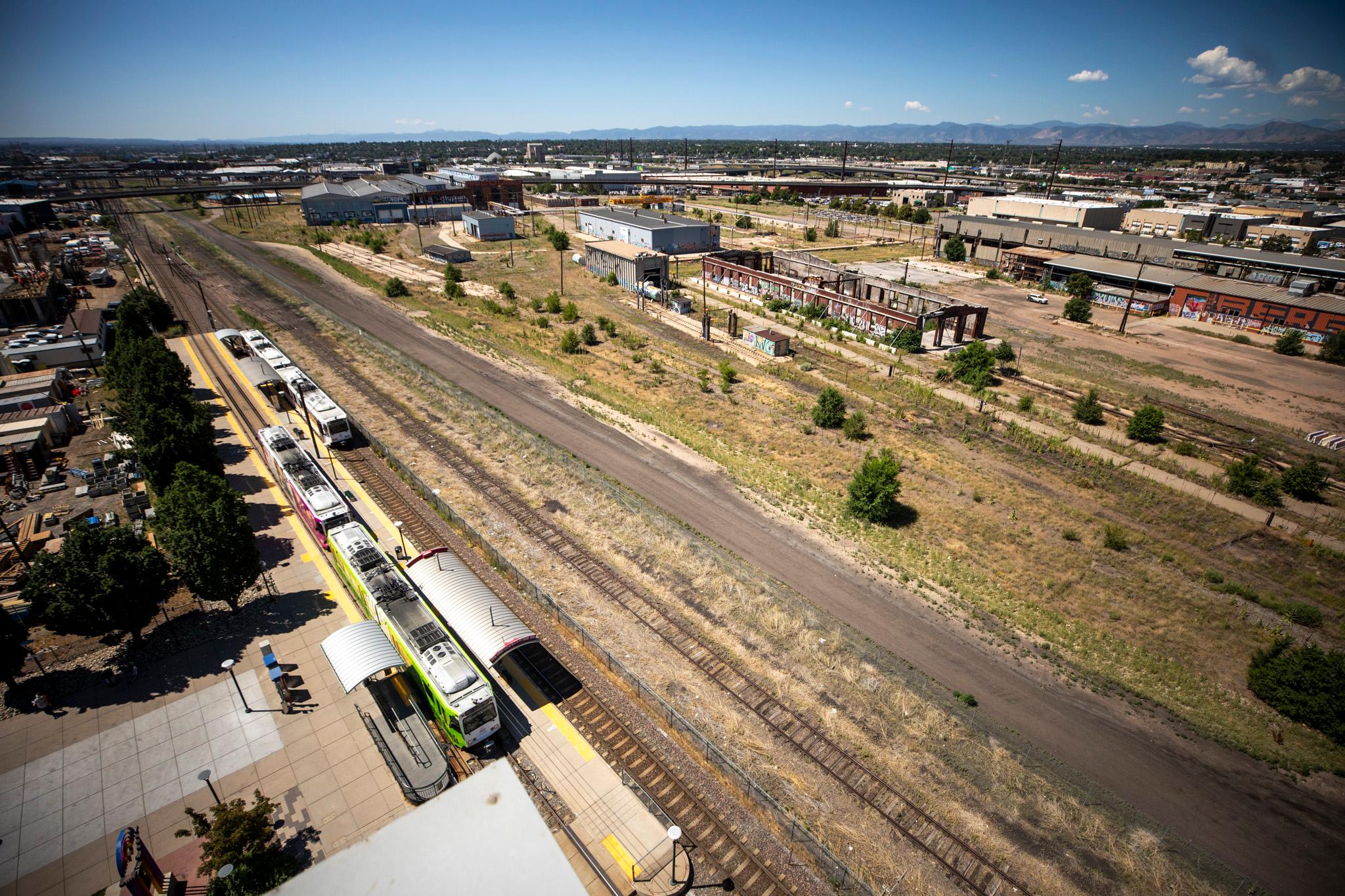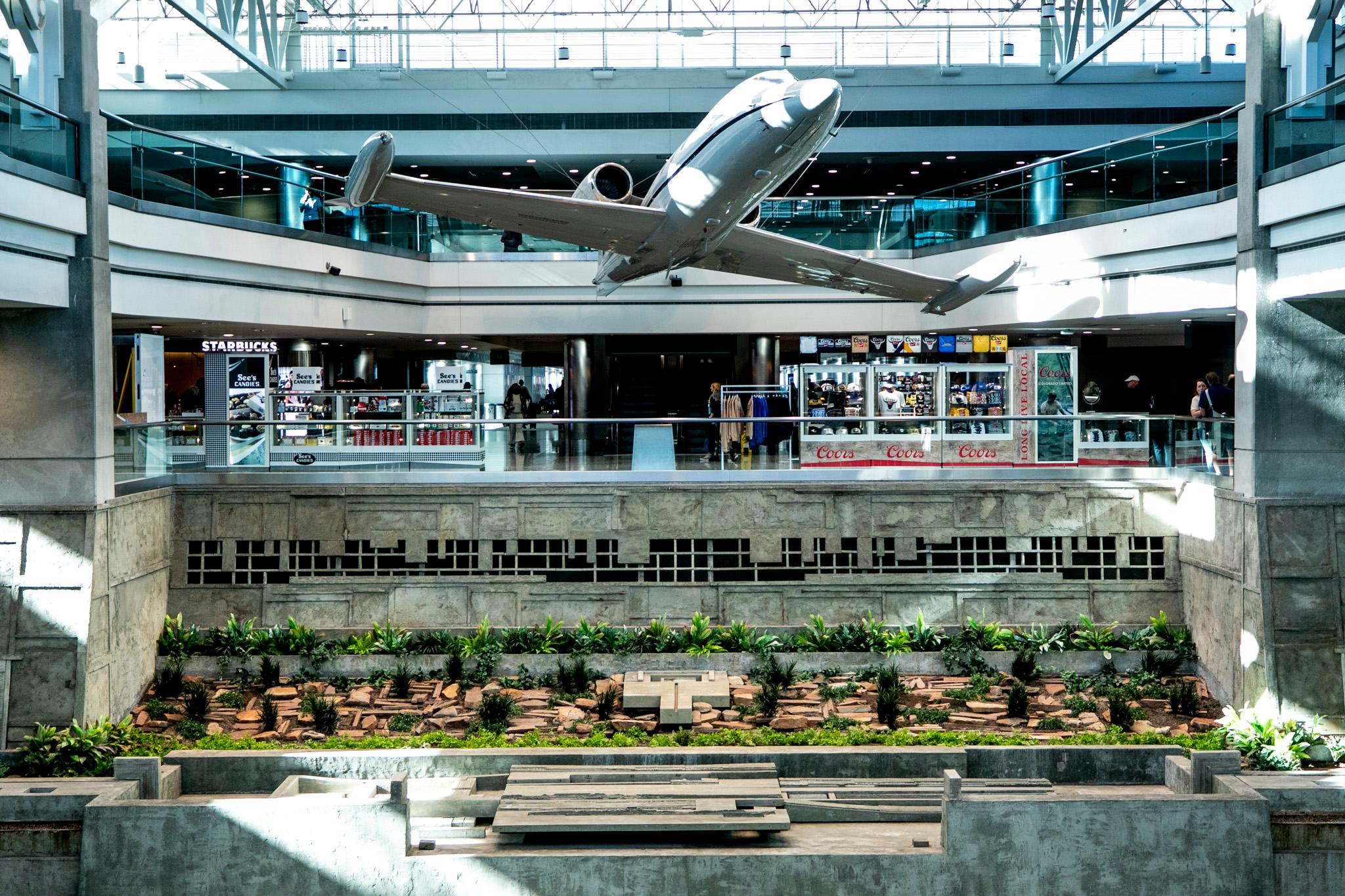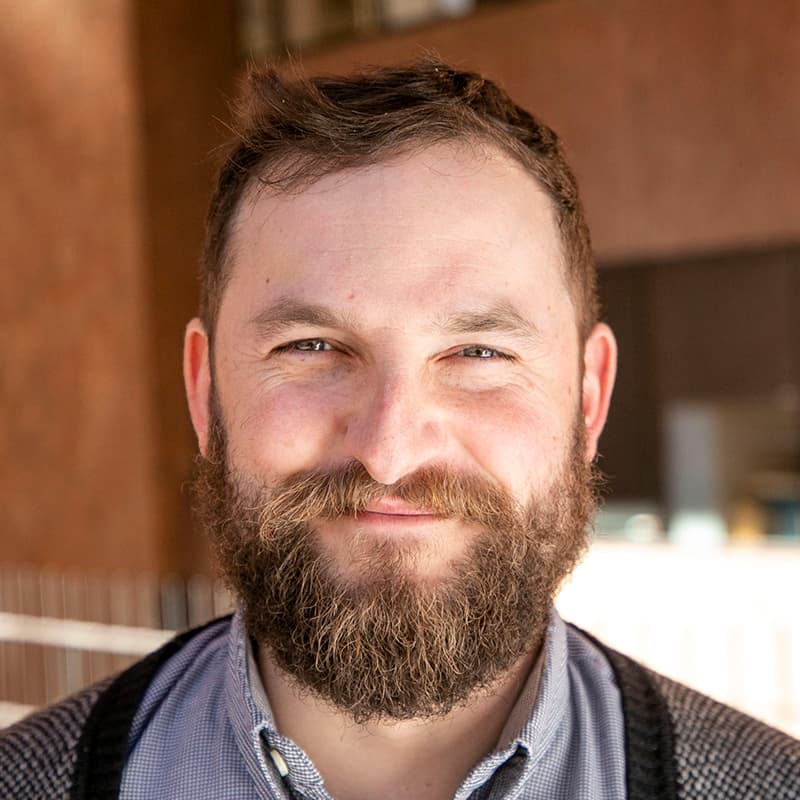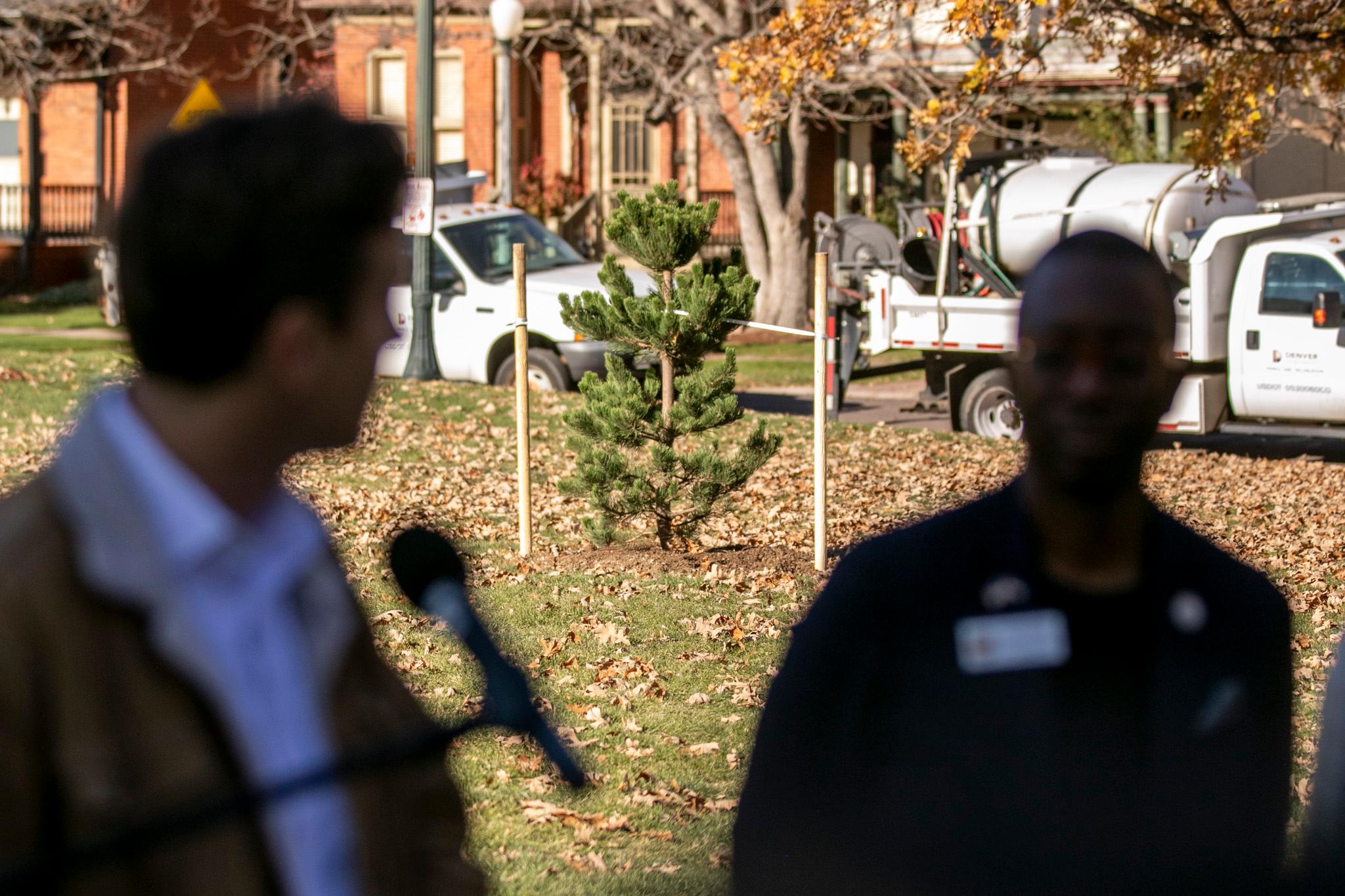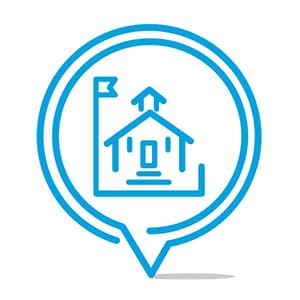
The Denver Broncos revealed new details on Wednesday about the stadium they plan to build at Burnham Yard.
The team submitted a pre-application, including a high-level map of where the stadium and surrounding infrastructure could stand. The entire project is expected to cover 150 acres on the southwest side of downtown.
The plans show that the team is hoping for substantial upgrades to public infrastructure around the site, including more than $100 million in city-funded improvements to nearby roads that were included in the Vibrant Denver bond package.
“The Walton-Penner Family Ownership Group’s vision is to establish a new model for a ‘Stadium Neighborhood’: a vibrant urban development with a one-of-a-kind fan experience, diverse daily offerings and meaningful connections to surrounding neighborhoods and the region,” the document reads.
“This transit-oriented development will deliver housing, jobs, tourism, entertainment, amenities and cultural vibrancy for Denverites and visitors alike, anchored by a new world-class home for the Denver Broncos and all of Broncos Country.”
The Broncos hope to secure building permits as soon as January 2027 and to open their new stadium by the 2031 season.
A community open house is planned for La Alma Recreation Center on Wednesday, Nov. 19, with the public invited to drop in between 5-7 p.m.
Denver voters just agreed to help.
Just hours before the team submitted its pre-application, Denver voters approved Vibrant Denver, a spending package that includes nearly $140 million of upgrades and changes for two road bridges near the site.
The new plan shows the Broncos were likely counting on the bond. The city’s planned Eighth Avenue project would involve demolishing a large stretch of the viaduct, instead turning it into a surface street through the stadium area.
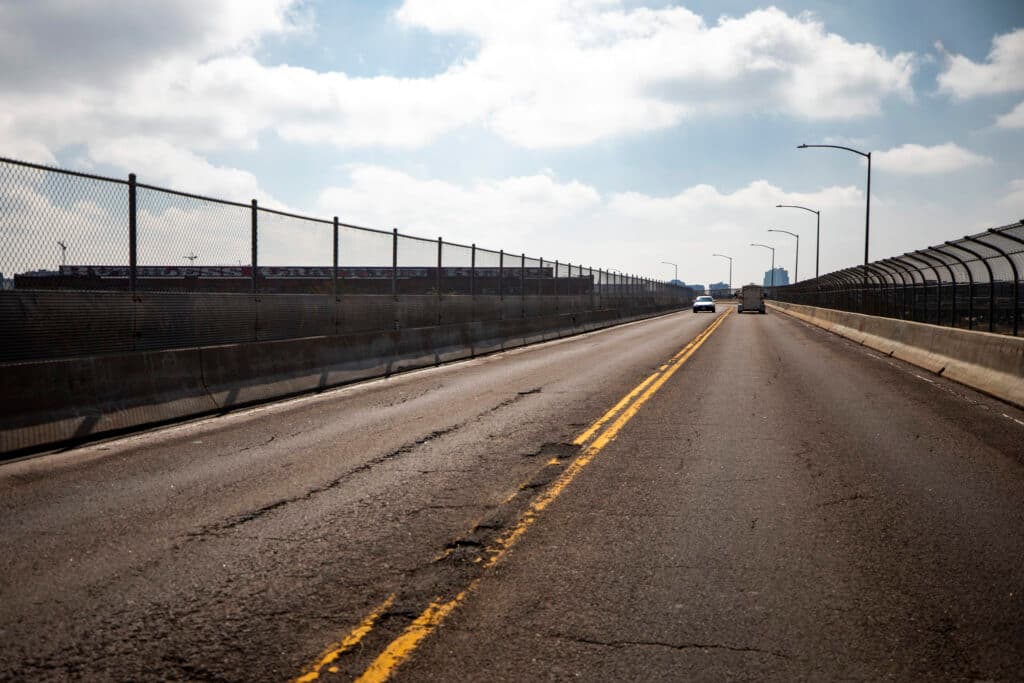
The area plan also shows that Eighth Avenue could be significantly rerouted through the stadium site to make way for the stadium and surrounding development. The city plans to spend $89 million on the viaduct project.
The nearby Sixth Avenue viaduct will be repaired on the south side of the property at a cost of $50 million, though it will still need to be replaced eventually. The Broncos’ plan calls for the stadium district to be linked to the 6th Avenue viaduct near the site of the current ramps on Seminole Street.
City officials say both viaducts are aging, important road links that need substantial work regardless of the Broncos’ plans.
The Broncos’ plan also calls for extensions of Ninth, 10th and 11th avenues, which would need to cross the RTD corridor east of Burnham Yard. Those projects are not funded in Vibrant Denver. In particular, 11th Avenue would extend across the entire site and into the neighborhood to the west.
Transit and transportation:
The Broncos’ plan calls for a “shared parking model,” relying on both new onsite parking and existing parking along nearby light rail lines.
The plan consistently emphasizes transit, walkability and bicycle access. One major connector, 13th Avenue, would become a “key east-west bikeway,” as well as a road for automobiles.
“Encouraging fans and visitors to use a wider range of transit options could help distribute demand, reduce vehicular reliance and create a more balanced and accessible network,” the plan states.
The stadium itself would stretch from about 9th Avenue to 11th Avenue, while roads would divide the larger site into a dozen or more blocks.
The large-area plan anticipates the stadium will sit just east of a planned Front Range Passenger Rail stop. Gov. Jared Polis and other state leaders hope that FRPR will eventually run from Pueblo to Fort Collins.
The existing 10th and Osage light-rail station would also be just east of the site, though it is separated by a rail corridor and would need to be connected.
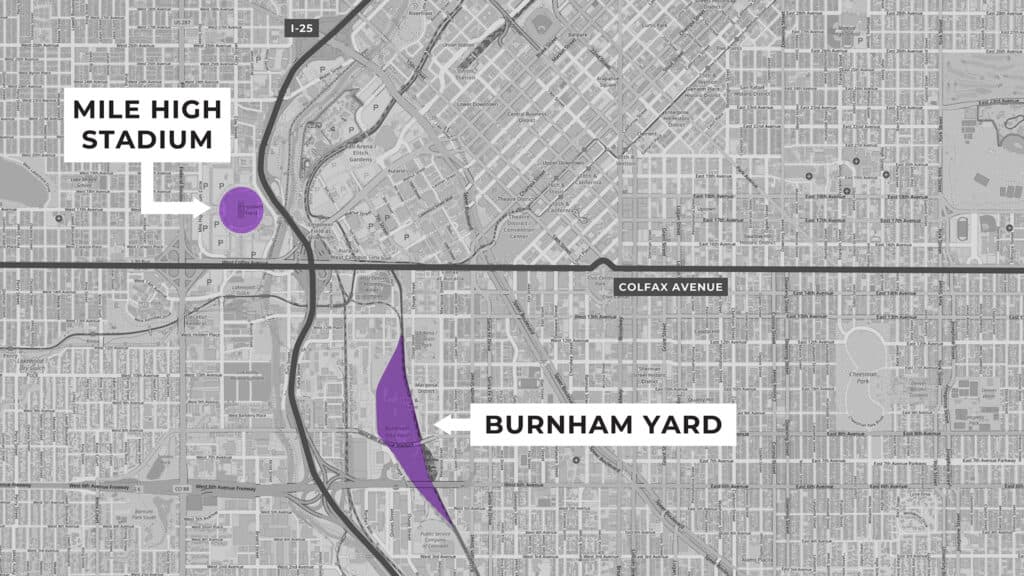
In addition, the Broncos hope to reuse the historic locomotive shop on the site, part of an effort to “[s]howcase the site’s industrial legacy.”
"The Large Development Review—alongside the Community Benefits Agreement and Small Area Plan—is an opportunity for the Denver Broncos to ensure the stadium and mixed-use community bring meaningful, lasting benefit to the area,” the team said in a statement. “Our goal is to create a true local asset that expands access, improves quality of life and provides year-round impact for the broader neighborhood, metro area and visitors.”
Many more details are still to be determined.
The team just began the large development review (LDR) process, which is meant to provide “clear direction from the city at the earliest stage of project planning on how they are expected to meet priorities important to Denver’s neighborhoods, including, for example, providing coordinated infrastructure improvements, publicly accessible open space, parkland, and quality design,” according to planning department spokesperson Alexandra Foster..
The Broncos will also need to complete a small-area plan, mobility study, infrastructure master plan and site development plan. Meanwhile, a community benefits agreement could dictate issues like parks, affordable housing and business support.
Who’s paying?
The Broncos have argued their stadium will be entirely privately funded, with no new taxes, but there are some caveats. Besides benefiting from the viaduct projects, the team may also pursue tax benefits, such as tax-increment financing, or TIF.
TIF allows the team to effectively reduce the tax bills for the development and instead spend that money on infrastructure. Advocates argue it’s a way to catalyze new development and ultimately benefit the city.
But that kind of agreement would reroute money that would otherwise have gone to the city’s budget, said Geoffrey Propheter, a professor of public affairs at CU Denver, who specializes in stadium financing in an earlier interview with Denverite.
A TIF would reduce the stadium’s contribution to the tax base, even though the city would still have to spend money to provide services in the area.
“Instead of your and my property taxes going into a general fund and then being spread across the city through the budget process … we get to funnel the team and the ancillary development’s tax liabilities to the team through the tax increment district,” Propheter said. “So that money never touches the general fund.

